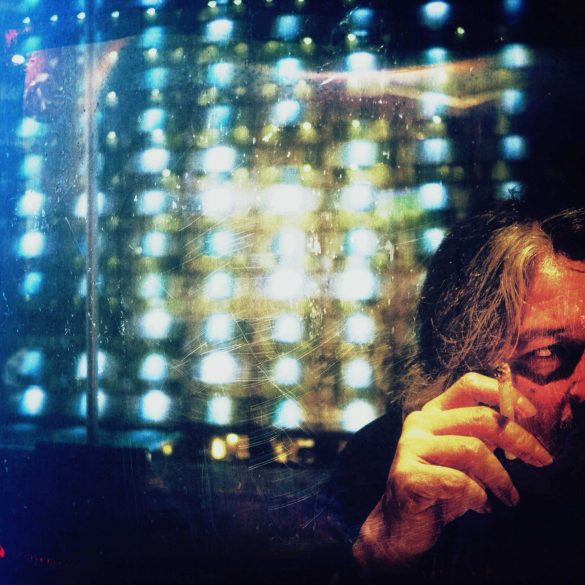
Oscar Motuloh, Jakarta. May 2014. Photo © Kevin WY Lee
Oscar Motuloh is a burly, charismatic man with a mischievous smile. Meeting him in person, one would think rock and roll than point and shoot. But Oscar is all about photography, albeit with a little music thrown in to keep the circle of life rolling.
Oscar Motuloh is one of Indonesia’s most influential photographers and founder/frontman of Galeri Foto Journalistik Antara (Antara), Indonesia’s foremost institution in photojournalism based in Pasar Baru, Jakarta. Rony Zakaria and I had bumped into him earlier at Antara when we took our workshop class for a gallery visit. Work from the latest graduating students were up on the walls in an exhibition titled ‘Unfinished’. Rony was once an Antara student and counts Oscar as a mentor. Oscar agreed to meet us in the evening for a drink and a chat.
We met him later at a bookshop at the Grand Indonesia Mall. He was sporting a Pink Floyd T-shirt and had 2 books tucked under his arm. For you, he handed me one. It was an autographed copy of his SOULSCAPE ROAD photo book, one of my favourites from Indonesia. The other book he had just bought –A Day in the Life of The Beatles, by Don McCullin, one of his favourite photographers. Rock and roll, point and shoot, as I said.
We headed upstairs to a regular haunt for some German beer, meat and conversation…
You look more like a rockstar than a photographer.
Oscar Motuloh: No, no. Hahah.
So music is a quite big part of your life?
In my opinion, in Photography the eye is not the only thing you should use to appreciate things. Basically, there are things you can hear as well that can drive you to make a photograph. So it’s not only just about taking pictures, it has to be a combination. At Antara Galeri we have a little mission. Because in Indonesia there is pluralism, especially for these times in the last 10 years. We have to campaign with our photography, for the basis of our nation. Not for any single cause like religion, but for diversity. In Indonesia we have the phrase Bhinneka Tunggal Ika* which means unity in diversity.
*Bhinneka Tunggal Ika is the official national motto of Indonesia. The phrase is Old Javanese translated as “Unity in Diversity,”. It is inscribed in the Indonesian national symbol, Garuda Pancasila (written on the scroll gripped by the Garuda’s claws).
But personally you are also very interested in music itself right?
Yes, yes. Because before I had to learn photography, so I listened to music and watched cinema, and literature too. Because at that time, we had no school of photography. Haha, so I taught myself, and through friends and seniors. They brought books. It was very difficult at that time. No Google. Hahah.
So who was your mentor?
There were so many I think….. Ed Zoelverdi and Kartono Riyadi and many, many friends coming from different disciplines not only just photojournalism. Feri Arianto at that time too. Feri was one of the commercial photographers but he had quite a lot of books in his house. So I would go there and read sometimes.
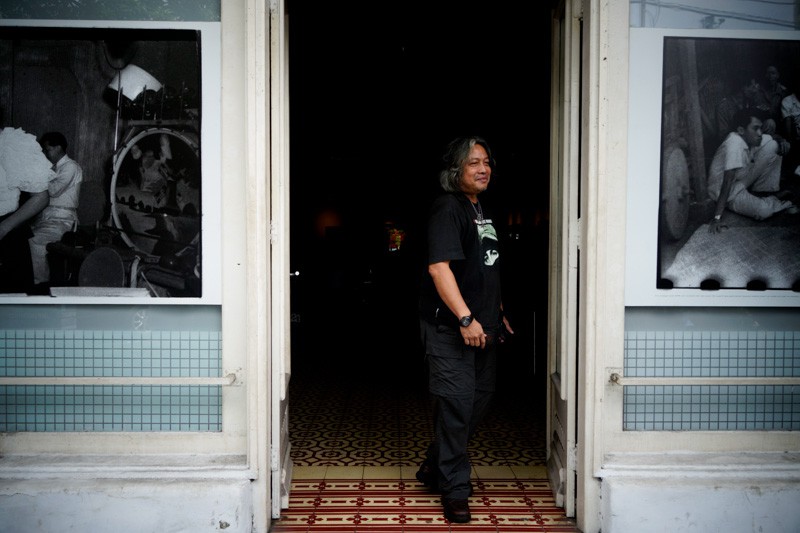
Oscar Motuloh at Galeri Foto Journalistik Antara. Photo © Kevin WY Lee.
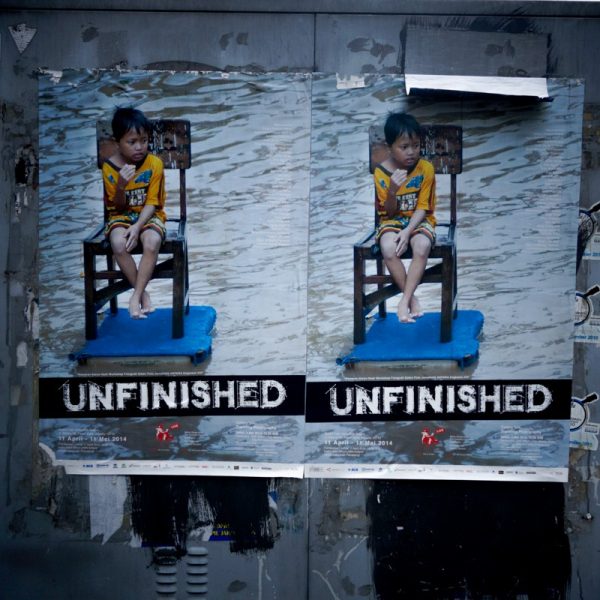
‘Unfinished’ Exhibition of Antara’s latest photojournalism students.
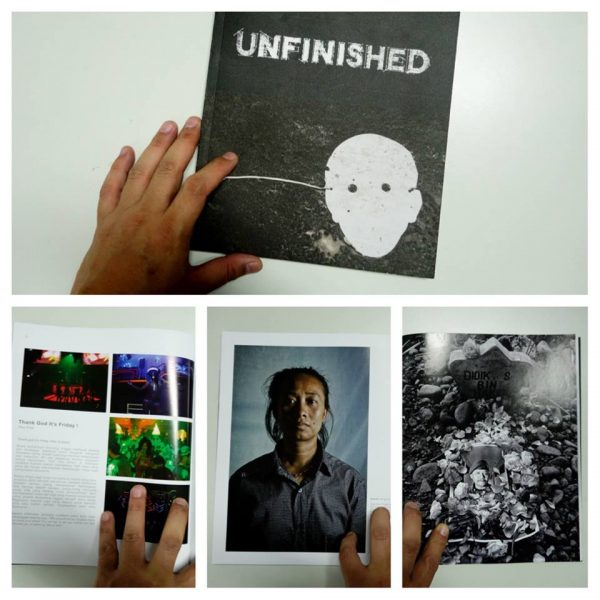
‘Unfinished’ Exhibition Catalog of Antara’s latest photojournalism students.
So your first exposure to photography wasn’t photojournalism?
No. Commercial, but I had to try but it was too late for me to be a photographer. I was already in my early thirties. I had a few friends that were in commercial, but I thought that was not my way. Not my style also. I tried one or two times taking fashion photography but it didn’t click. I had a best friend in commercial photography but documentary and photojournalism was fixed for me.
Photojournalism is just my subject (personal interest) but I also appreciate the young contemporary photographers in Indonesia and what they have to share. For example,
like MES 56, they published their book and we have it at the gallery. Revolusi #9 like the Beatles song. MES 56 is doing very well. They are consistent and doing many things. They have a lab and workshop and are doing experimental work. They also have an in-house magazine. I think it’s great.
But do they call themselves photographers or artists who work with photography?
Artists. Haha. Like Robert Mapplethorpe. Haha. I’m not a photographer. Here in Indonesia, we call it Rupa Foto (Foto Seni Rupa). Photo Artist.
Rony Zakaria: Now there’s a new term. Lens-based Artist.
It’s an interesting discussion. I went to the opening of the Annie Leibovitz exhibition the other week in Singapore. Someone asked Annie how she can keep such a long working career. She answered and then described her experience and journey. In her first decade, the approach was very documentary. She describes her second phase as a documentary photographer trying to make art. Then switching back to her documentary roots. And now with digital, she feels it is more like artists working with photography. In a way, I would assume she’s commenting on the medium. That digital isn’t as tangible as film. Digital is just 010101s. It’s just numbers, formless, on an SD Card, that you can manipulate and multiply as you see fit.
Yes, technically. But the photography is quite the same. It’s still how to see. Those are just mediums and tools I think. Also especially for Leibovitz, she was working together with Mary Allen Mark in their early careers. They both had crossroads in a period of time that had many styles and approaches. And they both chose their own ways.
Annie is one of the photographers with so many assistants. Haha. In Indonesia, we also have sculptors who have 40 or 50 assistants. They think and talk about their ideas and everyone does the work under their name. So it’s like being a director. Director of photography.
That was the first time I saw Annie in person. She is very comfortable and has a lot of charisma. Same as you, you have a lot of charisma as a person.
Yes, yes. That’s why she had affairs with the subjects of her photography. Jim Morrison at the time, maybe. Hahah. She’s also one of the few good looking photographers. As a person too.
You’ve been doing Antara now for so long, seeing so much work from the many students, do you still get surprised?
Yes, of course. I think every batch have their own ‘logo’. For example the story about the metrapolitan dog, they didn’t have stories or pictures like that before. It’s quite simple but it shows the character of the photographer. I don’t teach anything to anybody. Like Rony or Kemal. They are taught and influenced by the period of their times. Now they have their own way and style of photography. Past times have just passed away. History is just history. I just discuss with young photographers about their period of time. After that, we become friends, no more teacher. Haha.
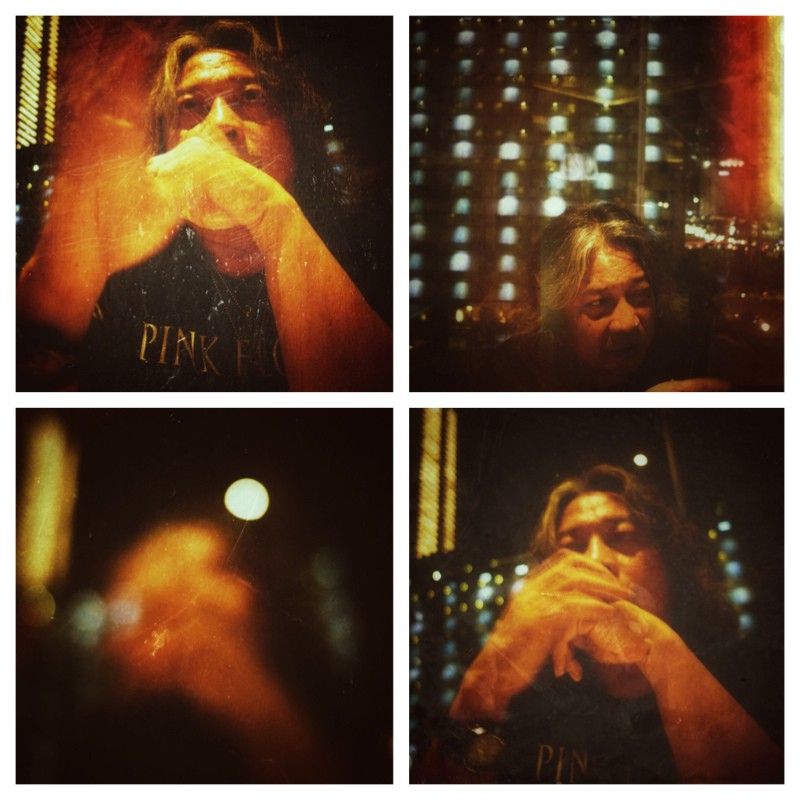
Oscar Motuloh, Jakarta. May 2014. Photo © Kevin WY Lee.
Do you always carry a camera with you and has your photography changed with age?
Yes, in my pocket, just for in case something happens. But sometimes I don’t use it. Photography is like my soulmate. I write too and photography inspires me like music, talking with friends, interaction with myself, reflections and anything in life. I’m happy to be jailed by Photography.
So do you believe that all photographs are self-portraits?
Almost, I think. When I was young, I read a book by Robert Frank. I remember he said every picture you take now, after you take it, it becomes history, the past. And he worked experimentally with the medium like scratching the negative. Photographs were never about going to the future, as an object. But you do have a reflection for the future. So I didn’t agree with Robert Frank’s phrase but it was quite an influence to me as a form of dialectic. Sometimes in photography you have to talk about tomorrow, along with the past and history. I’m very glad that the batch this year chose the title ‘Unfinished’ because that’s the way of documentary and journalism. It is a never-ending story.
So when does it end then?
Infinity. The line is right over there. It’s so faraway. Haha. Maybe you can see it, but you can’t reach it.
When students show you their work do you look at the pictures or do you read the text first? What’s your process?
I always interview. We have to talk and share. The character of the photographer is very important. The background, the childhood. I analyse and link the text to the pictures and express what I think to him or her. And we have to discuss. It’s my opinion so we have to argue. Until we have a formula, but not a formula of mine of course, but when they say ‘that’s what I want’. Photographers in Jakarta are sometimes shy to talk and show up their work.
Has there been times when a photographer shows you the work and you felt you couldn’t work with it?
Sometimes. That’s why the character of the photographer is very important for me. Maybe they show pictures but the pictures aren’t theirs. The pictures show the eyes of other people and not their own. This is yours? I ask if they have something else. It’s not so good also to reject at that time. Sometimes we have to talk slowly with young photographers.
Sometimes I propose that they go with their own mind and be personal. Are they only talking about the visual or about something improvised from their surroundings? Taking photos with the confidence in your ownself is quite different. Maybe the photograph as a photograph is not so strong, but you must still go with your opinion and your personal way.
And what are your thoughts on ethics?
Ethics is not only linked with morality. Ethics is not meant for regulation but about how you understand anybody else. For example, tolerance and appreciation of other people. In our classes, the mentors talk not about ethics itself, but about life and whether a photograph was taken with barbaric style or an ethical way. Haha.
Where do you think the line is, in terms of barbaric or not?
The pictures show by itself of course. It starts with the character as I said before. So if you have this expression then why do you take the pictures like this? So the line, you can feel it.
Have you seen pictures that have made you very angry?
Very often. Yeah. For example, I have friends who take photographs in conflict areas. And they tried to broadcast the pictures that I felt were barbaric to show other people. It was between humanity and also sales. Sometimes journalists think popularity is important. In my opinion, you are people behind the scenes so you know very well how to expose it. Unfortunately it also comes from a lot of young photographers. So it’s very important for me that a photographer is not only about good work and nice pictures but also about good character.
We have experienced in the field of photojournalism in Indonesia some who don’t know what they take photographs for. They just take photographs for a profession without any personal philosophical way.
This profession in Indonesia. Journalists, sometimes, you are standing in the line of fire. So if you don’t have a strong personality and character you will get burned.
How much does luck play a role?
No, I don’t believe in luck. Everything is earned. It’s not an arrogant statement. You must chase it for yourself. Sometimes if you have some luck in your life that’s a bonus. Haha. It’s like a big surprise.
So how much luck have you had?
Luck is not in my dictionary.
Do you notice a difference in this year’s students and those 10 years ago?
Like we talked about music earlier, each batch is like the sound of their generation. They have their own logos. They have their own pictures of their times. So if you want to compare it with the past 10 years, I think it is quite different. In what way? We are living in very political times in Indonesia. In the last 10 years, there’s a lot of talk about injustice, intolerance especially to minorities. They express these things in their pictures. Especially with this current president SBY. It’s not so good. All talk no action. The character of the nation influences the work of the students. The work is not political as a main goal but indirectly influenced.
I think the political situation and the government in the last 10 years have been the worst in the history of Indonesia. Because they are going to turn the nation into one way with religion. I think it is quite dangerous.
So do you think photography still plays a big role?
Yes, because in this atmosphere photography is still a powerful medium. Especially to the youth.
Do you think it’s important that when the 32 students finish the course that they participate in photography, become photographers perhaps?
Not at all. From the 30 or so students, maybe only 5–7 will become photographers. The main thing is that they all maintain and teach others in their community using photography or photographs. So this course is not about driving you as journalists or photographers, but sharing knowledge using journalism about how to see the world. Sometimes the press industry takes in some photographers but that’s not our goal.
Do you feel any pressure?
Yes. Sometimes internally they don’t have a deep understanding of photojournalism. For example, the board of directors think photography is very simple a profession – you just click. Sometimes I have to fight. That’s why in Indonesia the Editor-in-Chief is not necessarily good in interpreting photography.
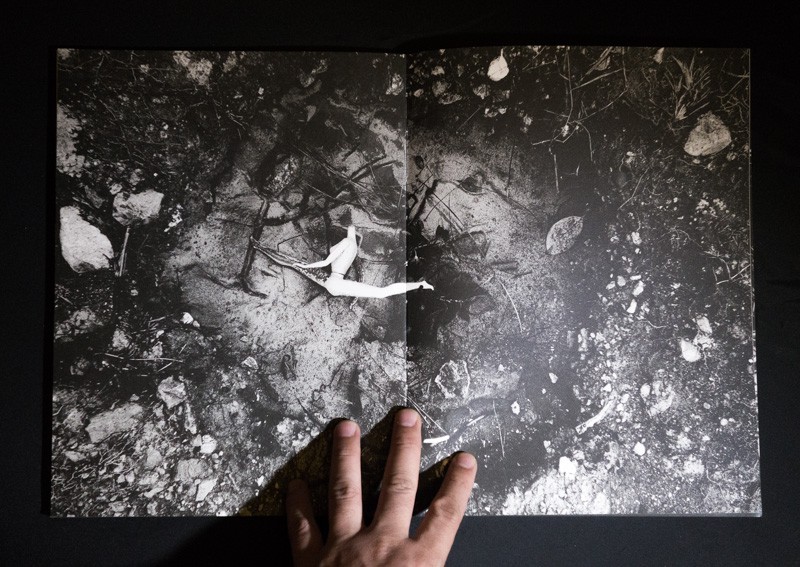
SOULSCAPE ROAD Photo Book, by Oscar Motuloh
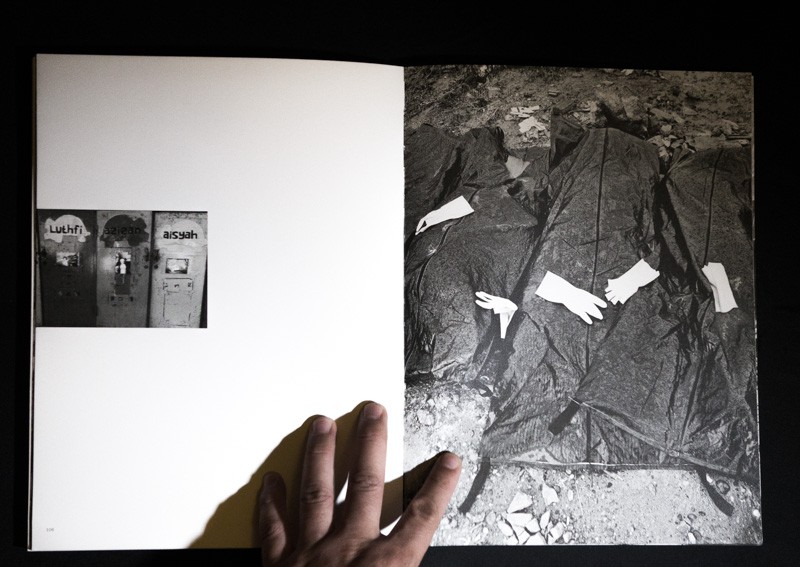
SOULSCAPE ROAD Photo Book, by Oscar Motuloh
Some people worry that once you’re no longer there as the frontman and champion of photography, what will happen to Antara?
I have a bold statement to my colleagues from other offices when they invite me for discussions. You must improve and educate yourself so you can defend anything you want to show. In Kompas for example, now they have education and they call you a photojournalist, not only just a photographer.
Some might feel that it is easier for you to defend or fight for something since you’ve established and proven yourself.
It’s not so easy like you said. But step by step. But the tactic or strategy is get the newspapers and magazines to recognise you as a photojournalist first, not just a photographer. In the field, there’s so many, many photographers working for the press, but not many know about working as a journalist, in a journalistic way. It’s not in their mind sometimes.
But your role in Photography in Indonesia is more than just photojournalism right? You are probably one of the very few, if not the only main curator of photography here. And it’s not only just photojournalism, but other types of personal photography too.
So that’s why Kevin, if we were to talk frankly about why Indonesia does not have any photography curators in the last 20 years, for example. It’s because they don’t care about it. They just think that if they want to go into photography practice, they will go into photojournalism. There is no education, universities and very few interest to learn about photography criticism. We have a lack of it.
Regeneration is very important. There are so many art critics in Indonesia. There are so many film critics in Indonesia. Cinematography critics, literature too. But in photography? They don’t care about that. Sometimes the writing is coming from the art critics.
Why do you think that is the case?
I think maybe this section is not so sexy. Hahah. Maybe you can’t make money like art criticism. But I’m still an optimistic. Maybe 2, 3 years later.
We had big hopes for Alexander Supartono before. But after, he changed his focus as a young critic and is now living abroad.
Consistency is the way. If you don’t have consistency over a period of time, you will lose touch with the young generation.
But I’m still an optimistic.
Interview Conversation has been edited for length and clarity.
Limited copies of SOULSCAPE ROAD Photo Book, by Oscar Motuloh available at the IPA Photo Book Store.
Share

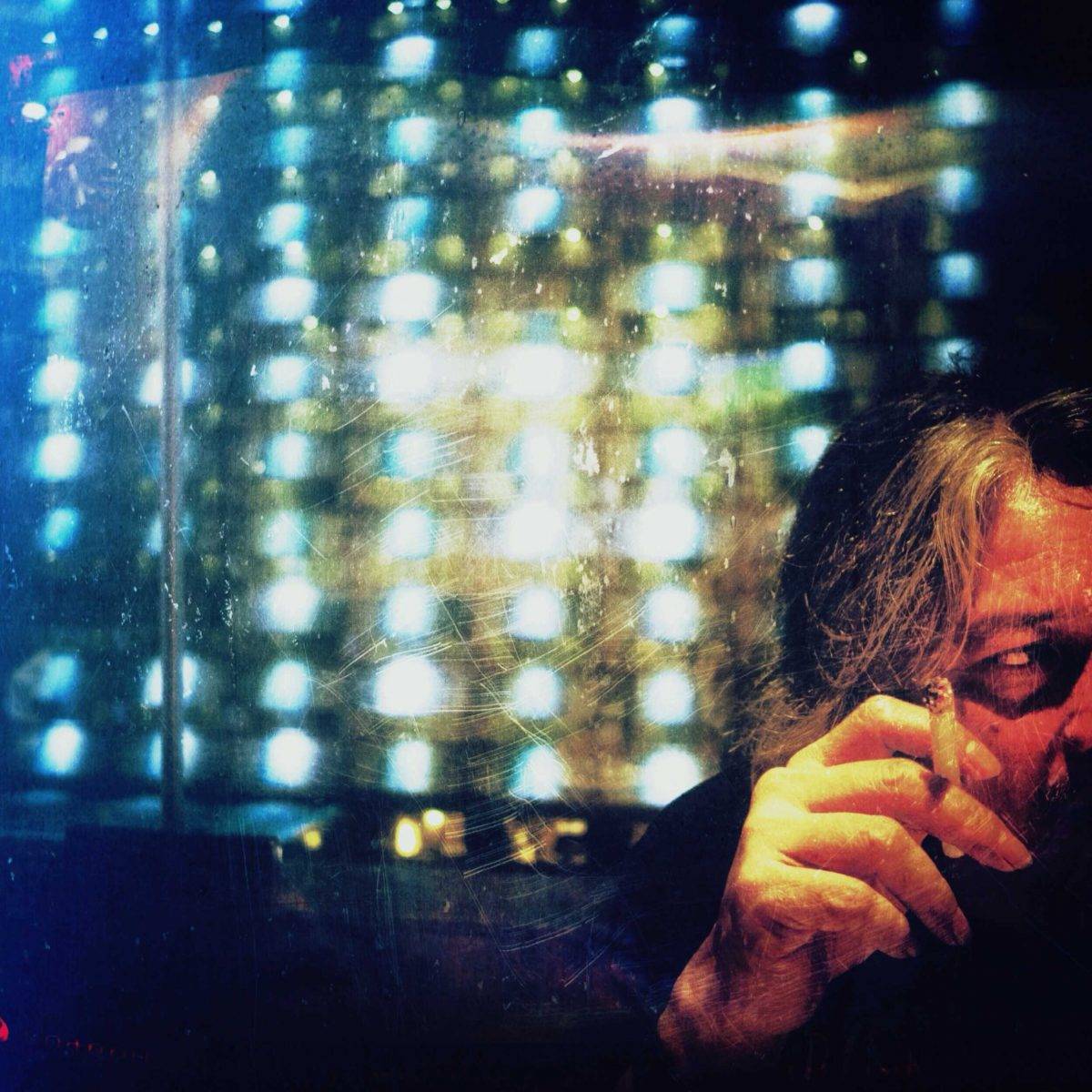
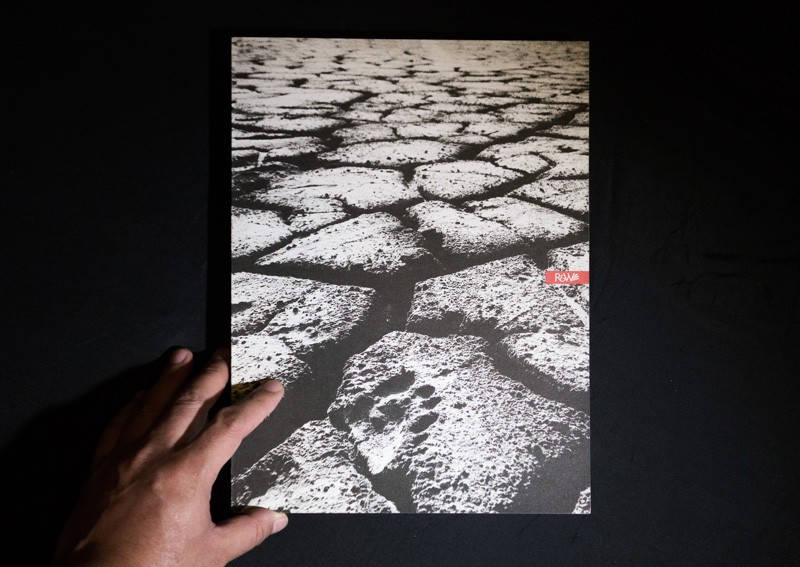
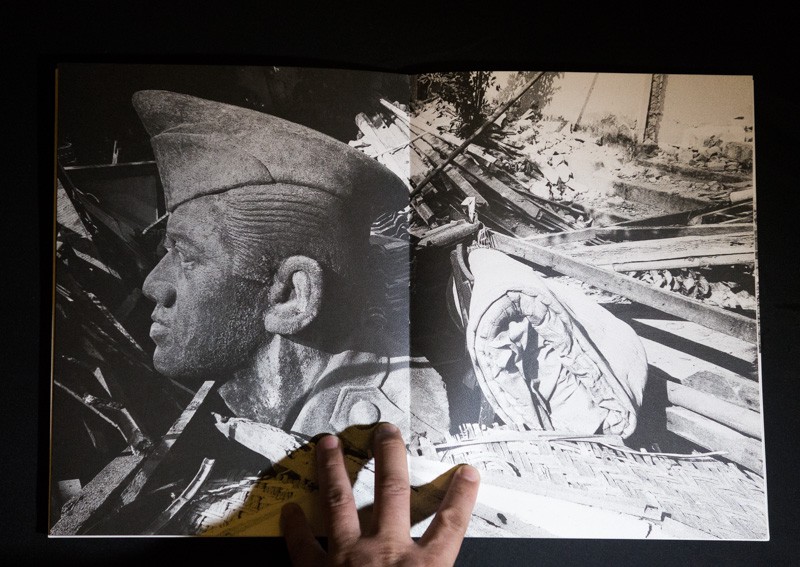
Comments 4
Pingback: Draft Introduction to “A History of Photography in Indonesia: From the Colonial Era to the Early 21st Century” (2015 ) / Brian Arnold | writing photography | se asia
Pingback: Draft Introduction | Fotografi di Indonesia
Revolution #9 not Revelation No.9
Thanks Agung.